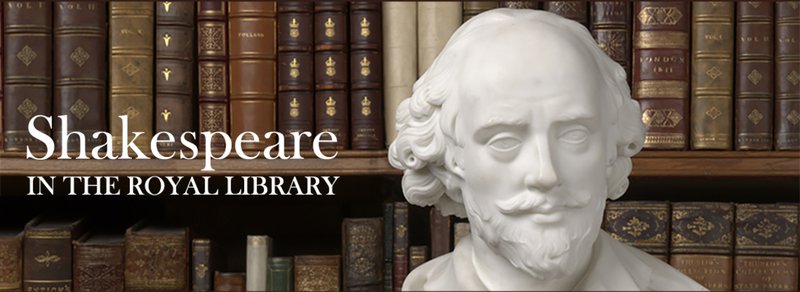Shakespeare and the Royal Court
Shakespeare in the Royal Library: An exhibition celebrating Shakespeare’s longstanding association with the town of Windsor and the royal court.
Tuesday 22 November 2016
Windsor Castle
Review by Nina Romancikova, MA Shakespeare Studies

The exhibition is in the Drawings Gallery and contains documents, pictures, books and objects connected with Shakespeare that are located at the Royal Library. Upon entering the Gallery, one notices that it is one small room. Since the exhibition is only contained in that one room, I noticed that visitors did not linger for longer than a few minutes – a quick look at Shakespeare’s bust and the display with Folio copies belonging to the Royal family – and then they leave. I think this is quite understandable, as the layout of the exhibition – a line of glass displays on each side of the room, is not attractive at first sight.
However, that is not to say that the exhibited pieces are not attractive. Quite the contrary, each display contains some remarkable pieces, such as maps that show the world (and London) how Shakespeare would have imagined and seen it, engravings, books of the period, Shakespeare’s sources and Shakespeare’s plays in different languages given to the Royal Family as gifts.
The exhibition especially draws on Shakespeare’s connection with Windsor, owing to his writing of The Merry Wives of Windsor. Probably the most peculiar object on display was a book and a frame made from wood of what was supposed to be the real Herne’s Oak (under which Falstaff is meant to meet with the wives in the climax of the play). The book and a frame could be compared to modern-day souvenirs. I found it fascinating that the readers and playgoers of Shakespeare back in the day would have been similarly obsessed with ‘objects’ as we are today. The Windsor part was what distinguished this exhibition from any other Shakespeare exhibition in 2016 – because what better place to display unique documents, books and objects connected with The Merry Wives of Windsor than the Windsor Castle itself.
Another favourite part of the exhibition for me, although unfortunately positioned by the exit door, was Queen Victoria’s diary opened on the page where she writes about her experience of seeing Macbeth. There were also Prince Albert’s etching of Shakespeare scenes as well as his and Victoria’s daughter’s painting of Romeo and Juliet falling in love. All of these fulfilled what the exhibition had set out to do – set Shakespeare within the context of the Royal Family and their interest of him.
Whilst I found the Herne’s Oak and Victoria’s diary very interesting, I do not believe that this exhibition was perfectly suited for the general public as they perhaps did not have a keen interest in this element of Shakespeare’s life. The exhibition contained a great range of documents and books but the overall arrangement of them was not particularly impressive or attractive to a casual visitor.

